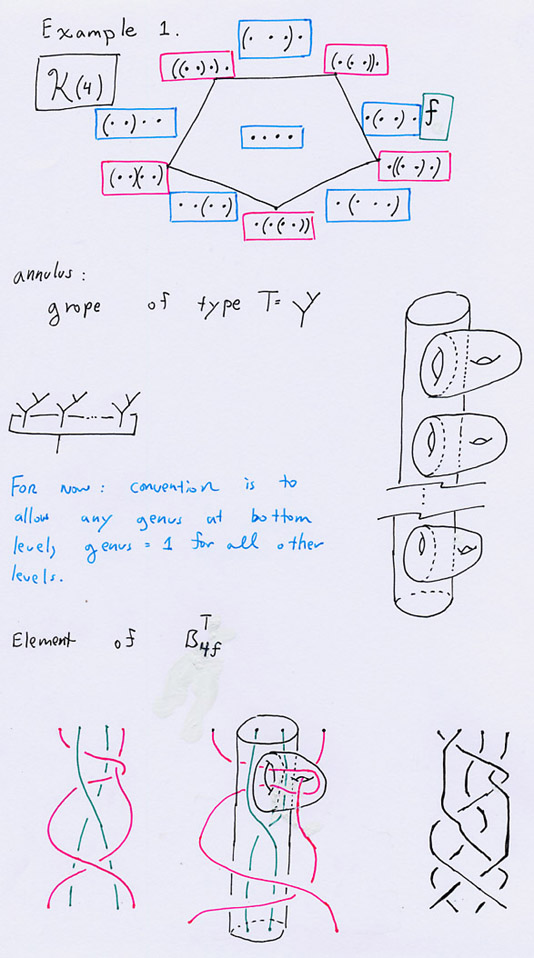
Grope constrained braids with associahedra indexing
Presentations
Filtrations
Intersections
Brunnian braids
Closing
Further investigation
So we are considering B_n and we have chosen a facet f of K(n), the Stasheff associahedron. Furthermore, for each pair of matched parentheses in the partition of the string of length n that is associated to f, we are given a grope of type T represented by a binary tree. The constrained braids are those which allow the strands in each partition to be contained in an annular grope of the given type for that partition. In other words for a set of strands whose initial "input" points are enclosed by a pair of matched parentheses we draw a grope cylinder of the type associated to that pair of parentheses with one boundary surrounding the set of input points and the other the outputs, and require that no strands ever intersect the surface of the grope. The braid must also respect the partition associated to f by having the output points of the strands fall into the same partition, so that the braids for a given f and list of grope types form a subgroup of B_n. Examples will follow.
We wish to answer some fundamental questions about these subgroups, including finding a presentation for them, arranging filtrations involving the grope types, finding intersections of subgroups involving various combinations of associahedron facet and grope type, and relations of these subgroups to more familiar ones such as Brunnian braids and commutator subgroups. Then we investigate the link types that arise as closed elements of grope constrained subgroups. In this context we would like to find or recognize invariants that reflect the geometry of the constrained braids.

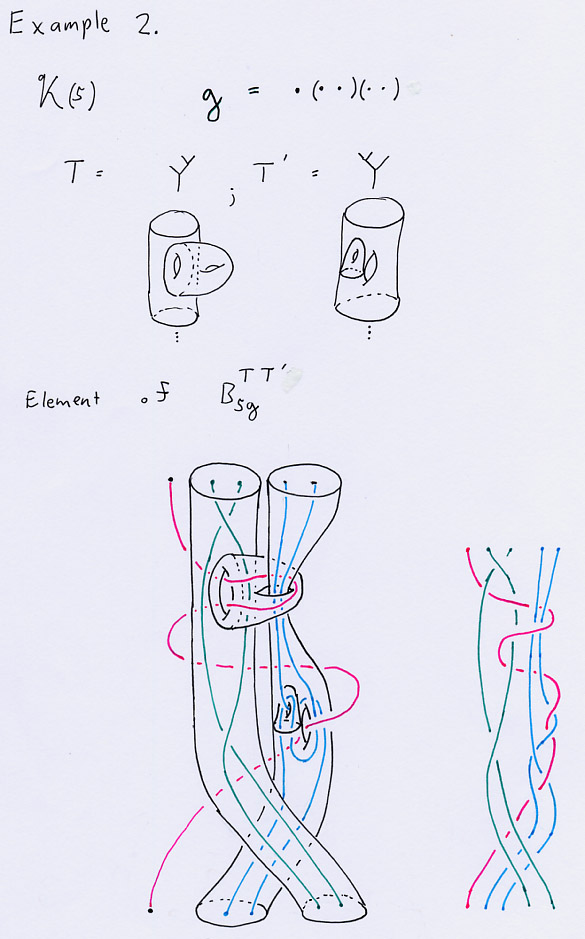
1 -> A -> G' -> G -> 1
and presentations of G and A, there is a simple recipe for a presentation of G'.
In the case of a subgroup X_n of B_n we always have the exact sequence
1 -> PX_n -> X_n -> SX_n -> 1
where PX_n is the pure version of our subgroup X_n, i.e. intersection of X_n and P_n, and SX_n is the subgroup of permutations that can be achieved as the projections of braids in X_n onto the symmetric group.
This reduces the problem of finding a presentation of a subgroup of constrained braids to finding presentations for the corresponding pure constrained braids and permutations. It seems that this problem will vary from relatively simple to quite difficult based primarily on the complexity of the grope types and secondarily on the number of strands. The hardest problems will correspond to facets of codimension n/2 in K(n). For simple cases we can proceed straightforwardly.
Here is my conjecture about the generators of the pure braids in example 1 above.
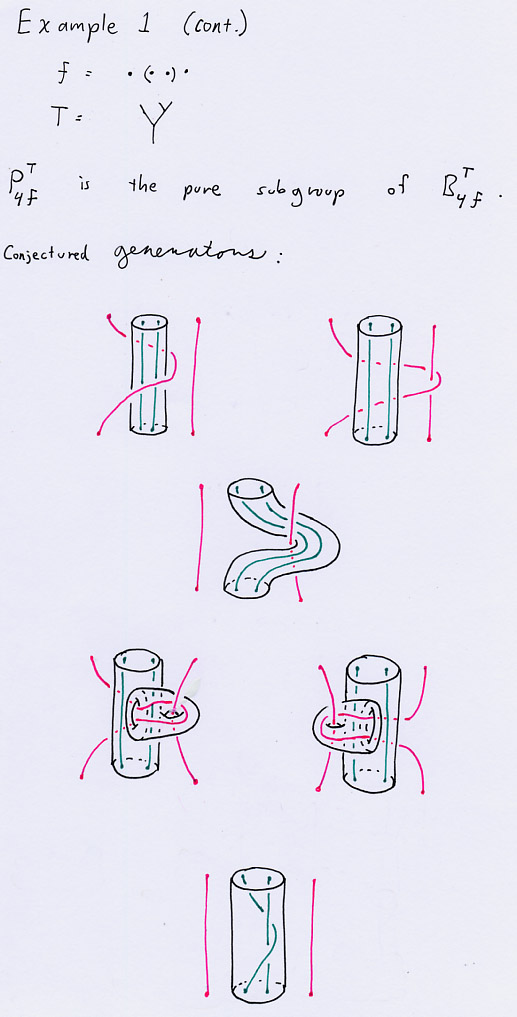
The subgroup of permutations will depend only on the facet of K(n). For the facet f = * ( * * ) * as in example 1, the permutation subgroup SB_4f^T is presented by < a, b | a^2 = b^2 = 1, ab = ba >
For another example, in K(5), consider the facet labled by ( * * )( * * * ). The permutation subgroup is presented by < a, b_1, b_2 | b_1b_2b_1 = b_2b_1b_2, a^2 = (b_i)^2 = 1, ab_i = b_ia > where i = 1,2. a is the interchange on the first two positions, b_1 switches the first two in the second group, and b_2 switches the last two.
Lots more work to be done here! We would like to start with a facet of K(n) and a list of binary trees, add labels to string elements and leaves, and then build a presentation out of those labels.
Here is an example:
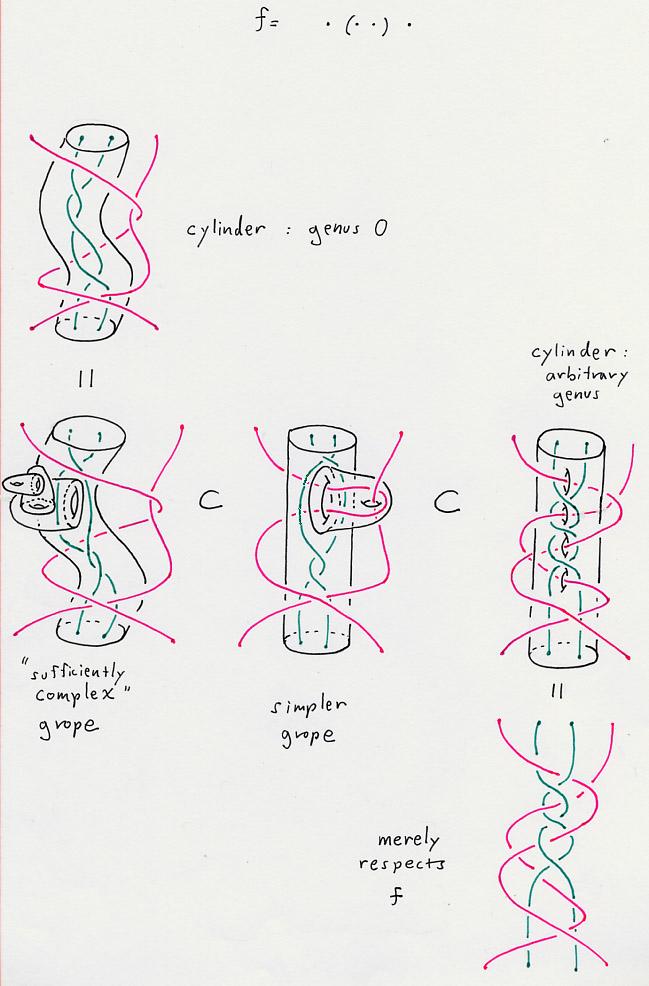
Also, given a fixed grope type, we should be able to find a filtration of B_n based on inclusion in K(n).
Here is an example:
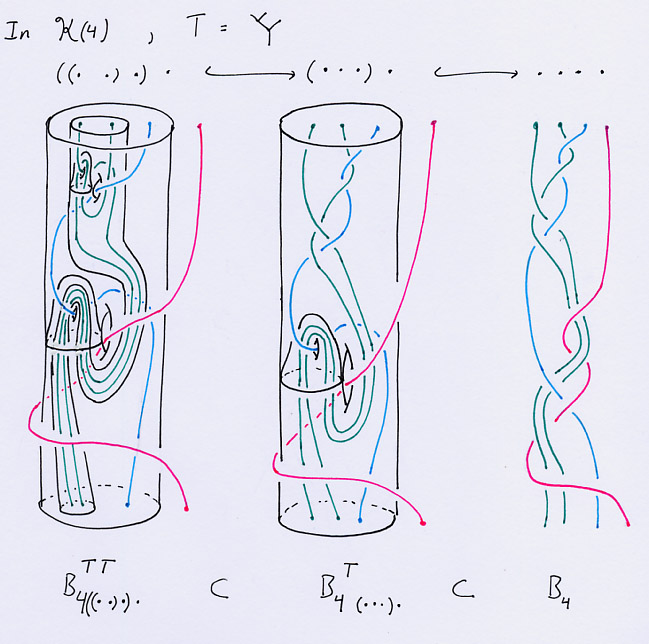
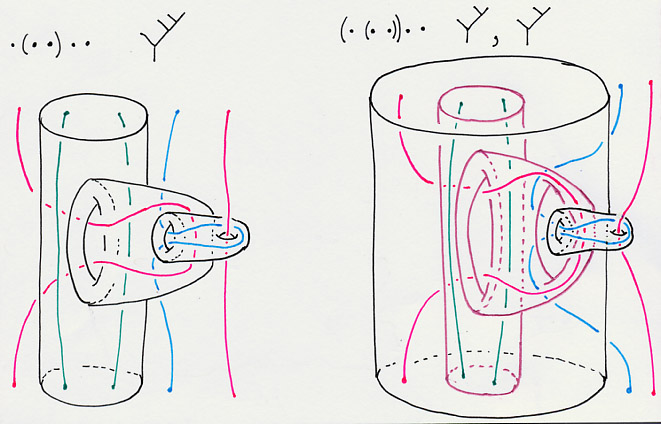


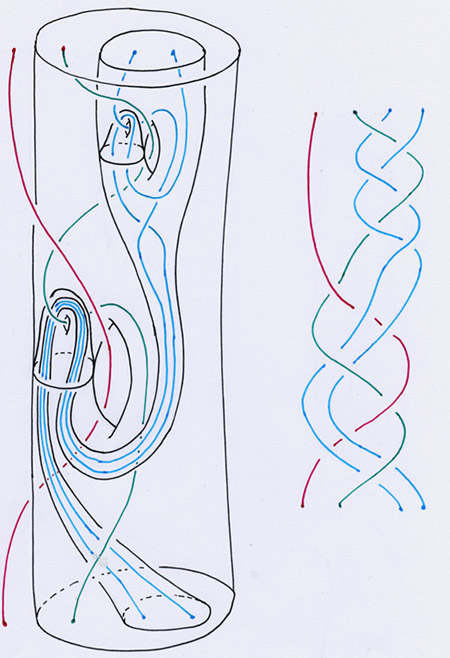
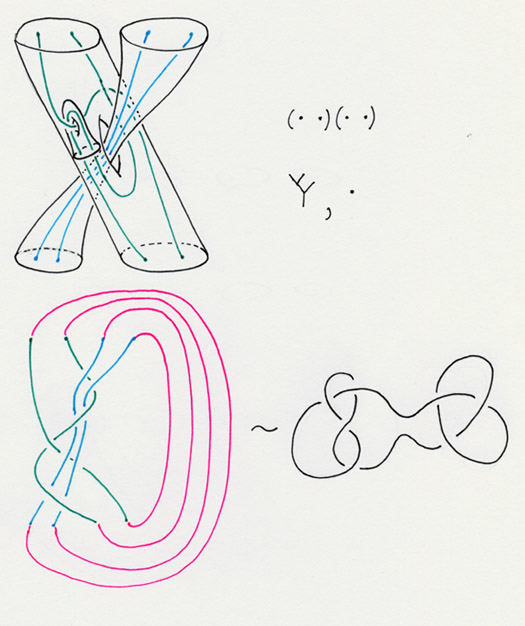
*(**)(**) -> (**)*(**)
or *((***)*)(**) -> (**)(*(***))*.
2. Grope constrained string links and tangles. The string links are braids without the monotonicity requirement, and thus without existense of inverses. Tangles also allow a strand to begin and end at the same level, or to be a circle.
3. There are several intimate connections between the lower central series of pure braid groups, homotopy theory, and Vassiliev invariants. We hope to shed light on some outstanding related mysteries in part by investigating subgroups of braids constrained by gropes.
a. Fact: for two knots K1 and K2 the following are equivalent:
(i) They have the same finite type invariants of Vassiliev degree < n
(ii) They are cobordant by a grope of class n
(iii) K1 = the closure of a braid b and K2 = the closure of pb, where p is in LCS_n(P_k)
Now since P_k is the fundamental group of Config(D^2, k), p is thus the boundary of the image of a grope of class n mapped continuously into Config(D^2,k).
Question: whether there is any direct relation between the two gropes of class n that occur above? Of course there may be more than two in question since both theorems state existence--but it would be neat if the same grope was shown to occur in both contexts. It appears that any braid p in LCS_n(P_k) occurs in one or more grope constrained subgroups. Perhaps this latter grope can be compared to the others.
Plan: show the relation between the filtrations given by grope constraints and the lower central series. Especially relate the grope constrained groups to the special subgroups in the descending series, Brunnian braids and the more general k-trivial braids. Then look for canonical cobordisms and continuous maps respectively using and from the constraining gropes in question.
b. Facts: for n>3 the pure braid groups over S^2, with face maps deletion of strands and degeneracies doubling of strands form a simplicial group with geometric completion of the homotopy type of S^2. There is a surjection from the Brunnian braids on n strands to the nth homotopy group of S^2. The nth homotopy group of S^3 is given by a quotient of the Brunnian braids on n strands over S^2. The Brunnian braids are cycles in the simplicial group, the subgroup we divide by is of boundaries. Brunnian braids occur as grope constrained braids.
Question: Fred Cohen asks for a natural geometric meaning of the above mentioned boundary braids.
Plan: Look among the braids constrained by nested gropes for cycles and boundaries. If this can be made to fit the framework for discovering the homotopy groups of S^3 attempt to generalize the process and look for relations between the quotients of grope constrained subgroups of braids over S^n and the homotopy groups of S^n+1.
c. Fact: a 1+1 dimensional topological quantum field theory can be given by a choice of vectors in a finite dim. vector space V for the disk, in V*V for the annulus, and in V*V*V for the pair of pants.
Question: we would like to formulate TQFT versions of finite type invariants by describing a field theory of grope cobordisms.
Plan: We need only show how to assign an invariant to a grope annulus, since a grope trinion and a grope disk can both be cut into a grope annulus and an ordinary trinion or disk repectively. We propose then to assign to a grope annulus the group cohomology of the n-strand constrained subgroup of B_n associated to the grope type.
Back to research page.
Revision Date: